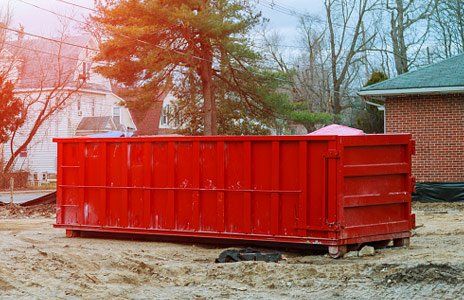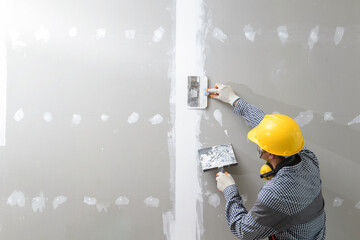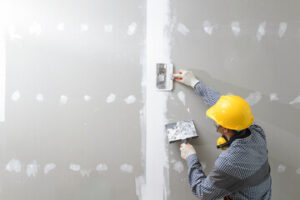Dumpster Rental Maryland business provides residents and businesses with a place to throw away their waste. It is a valuable service that helps keep cities clean and tidy. It is important to understand how a dumpster rental business works in order to make the most of it.
Dumpster pricing consists of three parts: dump rates, haul rates, and overage fees. Dump rates are the charges that dumpster companies pay to the landfill or transfer station for disposing of their customers’ trash.

A centralized inventory management system can help your dumpster rental business run more efficiently. It can automate standard business processes, such as customer billing, routing optimization, and container tracking, while keeping data up to date. This system can also help you spot trends in your waste management operations and make improvements to better serve your customers.
One of the most important features of any dumpster rental software is a customizable, intuitive interface. This helps your team stay focused on customer service, rather than the back-end office functions. It also reduces the time spent on manual paperwork, which can be a major source of frustration for many waste services companies.
When selecting a dumpster rental management solution, look for an easy-to-use interface that can quickly input an order and provide real-time inventory availability. It should also be able to show sizes and pricing on the screen. This way, you can quickly answer a customer’s questions, and you can prevent overbooking by avoiding unnecessary pickups.
Another benefit of dumpster rental software is that it provides a single, unified hub for managing all aspects of your business. This includes scheduling, dispatching, and invoicing. With this system, you can manage all your business processes from one place, which will save you time and money. Plus, you can track and monitor your fleet’s performance and productivity.
You should consider a dumpster rental software system that has GPS tracking capabilities. This will allow you to locate your equipment on a map with just the serial number or name of the item, and it will even tell you what direction the piece of equipment is facing. This is an essential feature for haulers that use remote locations, such as construction sites.
Dumpster rental systems can also help your company increase its efficiency by reducing the time it takes to update drivers’ routes and schedules. This technology eliminates the need for paperwork and enables you to change schedules on the fly. It also helps you identify idle dumping containers and dispatch them to order sites or dispose of them. This will save your company money by not wasting valuable resources on unused equipment.
Tracking your assets
When it comes to dumpster rental, asset tracking is an essential part of ensuring optimal operational efficiency and customer satisfaction. This is possible by implementing dedicated dumpster rental software solutions. These tools offer comprehensive features and services, which help dumpster rental companies maximize their profits and competitive edge in the industry. In addition to offering real-time data insights, these solutions can help them identify holes in their operations and implement the necessary changes to improve business efficiency.
Moreover, dumpster rental businesses often operate in a variety of locations, and it can be difficult to keep track of all the equipment using traditional methods like spreadsheets or log books. This is especially true if the dumpsters are at construction sites or homes that are being renovated or demolished, making them hard to locate. The best way to ensure that your assets are properly tracked is to use a dumpster tracking software solution that integrates GPS tracking. This allows you to monitor the location of every piece of equipment at any given time, which helps reduce theft and improve your overall operations.
A dedicated dumpster rental software solution can also provide valuable insights into the utilization rates, trip durations, and idle times of each piece of equipment. These metrics can help you identify the gaps in your operations and improve your dumpster rentals business by identifying trends, optimizing service schedules, and increasing profitability. Moreover, these solutions can help you save on fuel costs by providing a more efficient route management function. This is important for dumpster rental companies because it enables them to increase their profit margins while decreasing their transport expenses.
Another important aspect of a dumpster rental software solution is that it can help you save time by streamlining the entire process and reducing the amount of paperwork. For example, it can simplify the creation of quotes and invoices and allow you to clone existing contracts for faster, more consistent delivery. It can also enable you to easily manage inventory and streamline inspections and maintenance of your assets.
Additionally, a dedicated dumpster rental software solution can also help you save money on rent and maintenance by automating the billing and payment processes. This can significantly reduce your administrative expenses, which in turn can boost your bottom line.
Good customer service
In the dumpster rental industry, good customer service is essential. It is important to have a team of friendly and knowledgeable employees who can assist customers with their questions and concerns. Whether they need assistance with determining the right size dumpster for their project or need clarification on their contract terms, a company that prioritizes customer satisfaction will be more likely to attract repeat customers and referrals.
In addition to a strong focus on customer service, dumpster rental businesses should also invest in effective marketing. An effective digital marketing strategy can help a dumpster rental business target potential customers and increase brand awareness. This includes implementing a search engine optimization (SEO) strategy, creating a quality website, and leveraging social media platforms to drive traffic. An in-depth understanding of the dumpster rental industry and its trends is also essential. These trends can be influenced by changes in waste management regulations, new technologies, or societal shifts towards greater environmental consciousness.
Another key component of a successful dumpster rental business is having the right insurance coverage. This can protect the company against lawsuits and other potential losses. It is also essential to follow best practices for managing waste and employee safety. In addition, a dumpster rental business should provide clear contracts with its customers that outline all terms and conditions.
An excellent way to promote your dumpster rental business is through a referral program. This is a great way to generate new customers and build loyalty with existing ones. Incentives such as discounts or rewards can be offered to encourage customers to refer the company to their friends and family.
The cost of a quality website can vary depending on the type of site you need, but it’s a critical investment for any dumpster rental business. Make sure the site is professionally designed, loads quickly, and features high-quality content. Also, make sure the domain name is registered in your business’s name and that you own it. A well-designed website can boost your business’s credibility and help you rank higher in search results. Also, consider using a content management system to easily update and edit the site.
Marketing
In the dumpster rental business, marketing is key to attracting and retaining customers. A well-crafted website and social media strategy can help you reach a broader audience, generate leads, and increase revenue. However, implementing a successful marketing campaign requires careful planning and execution. Start by understanding your market and competition. Then, choose a strategy that will work for your company’s budget and target audience. Once you’ve selected a strategy, track its performance and adjust it accordingly.
One of the best ways to attract new customers is through online reviews and referral programs. These tools allow you to showcase your customer service and build trust with potential clients. However, it is important to remember that not all online reviews are genuine. It’s also crucial to respond to legitimate negative reviews in a calm and respectful manner. This will not only improve your star rating but will also show customers that you care about their experience.
Developing a strong online presence is vital to the success of any modern business. Having a professional-looking website with a custom domain name and relevant information about your services can help you establish credibility and boost visibility. Additionally, blogging is a great way to share valuable information about your business and industry. Choosing the right blog title is important, and using keywords can improve your search engine optimization.
As a small business owner, it’s essential to understand your tax obligations and take proactive steps to avoid costly mistakes. This can include establishing a reserve fund, keeping track of expenses, and limiting reliance on single revenue streams. Additionally, regular risk assessments can identify potential vulnerabilities and enable you to prevent them from becoming crises.
A loyal customer base is a crucial asset in any business, and this is especially true for dumpster rental companies. To retain your existing clients, focus on providing exceptional service and offering value-added services. This will ensure that your customers continue to recommend you to their friends and family. You can also offer discounts and rewards to encourage repeat business. Finally, make sure that your branding and messaging is prominently displayed on all of your dumpsters.

 When repairing small holes in drywall, the best option is often spackle. This versatile, quick-drying material can fill holes in various surfaces, including drywall, plaster, and wood. It’s easy to apply, dries quickly, and can be sanded down and painted once fully dried. However, spackle isn’t designed for very large repairs and may not hold up well if the wall is subjected to movement or stress.
When repairing small holes in drywall, the best option is often spackle. This versatile, quick-drying material can fill holes in various surfaces, including drywall, plaster, and wood. It’s easy to apply, dries quickly, and can be sanded down and painted once fully dried. However, spackle isn’t designed for very large repairs and may not hold up well if the wall is subjected to movement or stress.